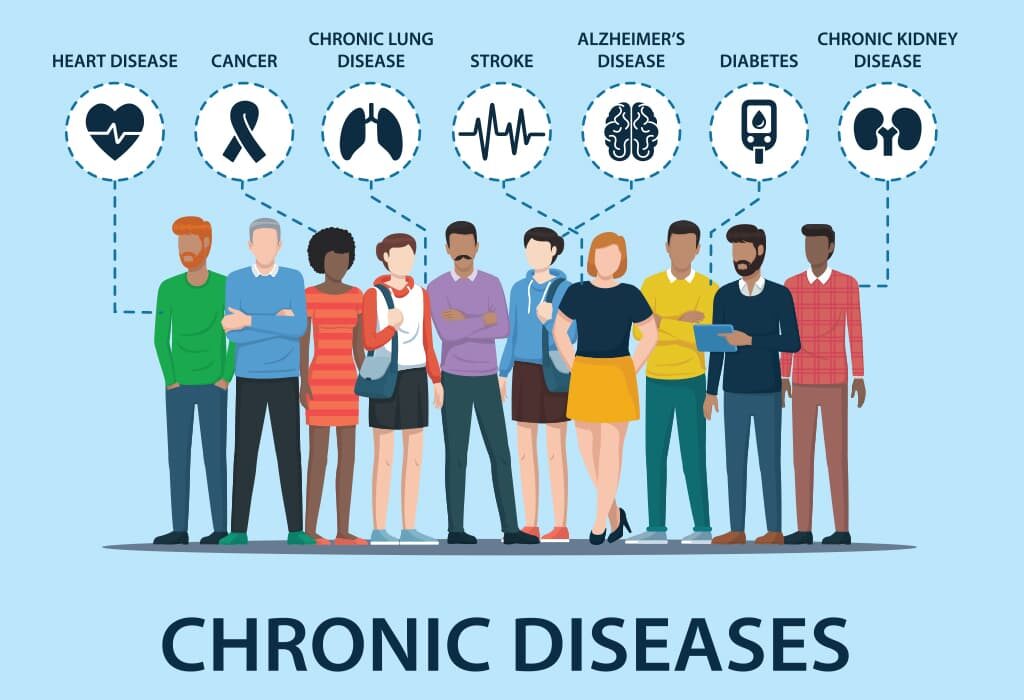Blog
Major Health Conditions: Strategies for Management, Prevention, and Treatment

Health conditions significantly impact individuals and communities, demanding effective strategies for management, prevention, and treatment when available. This article explores key health challenges, including cardiovascular diseases, diabetes, cancer, and respiratory disorders, and provides an overview of their management, prevention, and potential treatments.
Cardiovascular Diseases
Overview: Cardiovascular diseases (CVDs) encompass heart and blood vessel disorders, such as coronary artery disease, heart attacks, and strokes, which remain the leading global cause of death.
Management: Managing CVDs involves lifestyle changes and medical treatments. Patients are encouraged to eat a heart-healthy diet rich in fruits, vegetables, whole grains, and lean proteins. Regular physical activity, weight control, and quitting smoking are essential. Medications like statins, beta-blockers, and anticoagulants are commonly prescribed to reduce symptoms and prevent complications.
Prevention: Preventing CVDs centers on reducing risk factors by adopting a balanced diet, exercising regularly, avoiding tobacco, and managing stress. Routine health screenings can detect early signs of cardiovascular issues, such as high blood pressure or cholesterol.
Treatment: While a complete cure for CVDs is not available, medical procedures like angioplasty, stent placement, and coronary artery bypass surgery can restore blood flow and improve outcomes. Research is advancing toward regenerative therapies for heart tissue repair.
Diabetes
Overview: Diabetes is a chronic disease characterized by high blood sugar levels. Type 1, Type 2, and gestational diabetes are the main types, with Type 2 being most common and linked to obesity and inactivity.
Management: Diabetes management requires regular monitoring of blood sugar, following a balanced diet, and exercising. Medications such as insulin and metformin help control blood sugar levels, and patient education is critical for effective self-management.
Prevention: Preventing Type 2 diabetes primarily involves lifestyle changes—maintaining a healthy weight, eating a diet high in fiber and low in refined sugar, and staying physically active. Regular screenings for prediabetes allow for early interventions.
Treatment: There is no cure for diabetes, but innovations in glucose monitoring and insulin delivery have significantly improved management. Research into cures includes pancreatic islet transplants and gene therapy to restore insulin production.
Cancer
Overview: Cancer is a group of diseases characterized by uncontrolled cell growth that can occur in various body parts. It is a leading cause of death worldwide, with common types including breast, lung, prostate, and colorectal cancer.
Management: Cancer management depends on the type and stage. Treatments include surgery, radiation, chemotherapy, immunotherapy, and targeted therapies. A multidisciplinary approach involving oncologists and other specialists is crucial. Palliative care plays a key role in improving quality of life for patients.
Prevention: Cancer prevention focuses on reducing risk factors, such as quitting smoking, limiting alcohol, eating a healthy diet, and protecting skin from UV radiation. Regular screenings like mammograms and colonoscopies can detect cancer early, improving treatment outcomes.
Treatment: While a cure is not always possible, early detection and treatment can lead to remission. Advances in targeted therapies and immunotherapies are improving survival rates, and ongoing research aims to develop more effective treatments.
Respiratory Diseases
Overview: Respiratory diseases, including chronic obstructive pulmonary disease (COPD), asthma, and pneumonia, affect the lungs and airways, leading to breathing difficulties and reduced quality of life.
Management: Treatment involves medications and lifestyle changes, often combined with pulmonary rehabilitation. Common treatments include bronchodilators, corticosteroids, and antibiotics. Patients are advised to avoid smoking, reduce exposure to pollutants, and practice breathing exercises.
Prevention: Preventive measures include avoiding tobacco, reducing exposure to environmental pollutants, and getting vaccinated against respiratory infections like flu and pneumonia. Maintaining good indoor air quality and proper hygiene helps lower the risk of respiratory infections.
Treatment: Although many respiratory diseases are chronic and incurable, treatments can manage symptoms and improve quality of life. In severe COPD cases, lung transplants may be considered. Regenerative medicine and stem cell research offer potential future treatments.
Conclusion
Managing prominent health issues like cardiovascular diseases, diabetes, cancer, and respiratory disorders requires a combination of proactive prevention, effective management, and advancing treatment options. By adopting healthier lifestyles, staying informed, and supporting medical innovations, we can work toward better health outcomes and improved quality of life for all.


